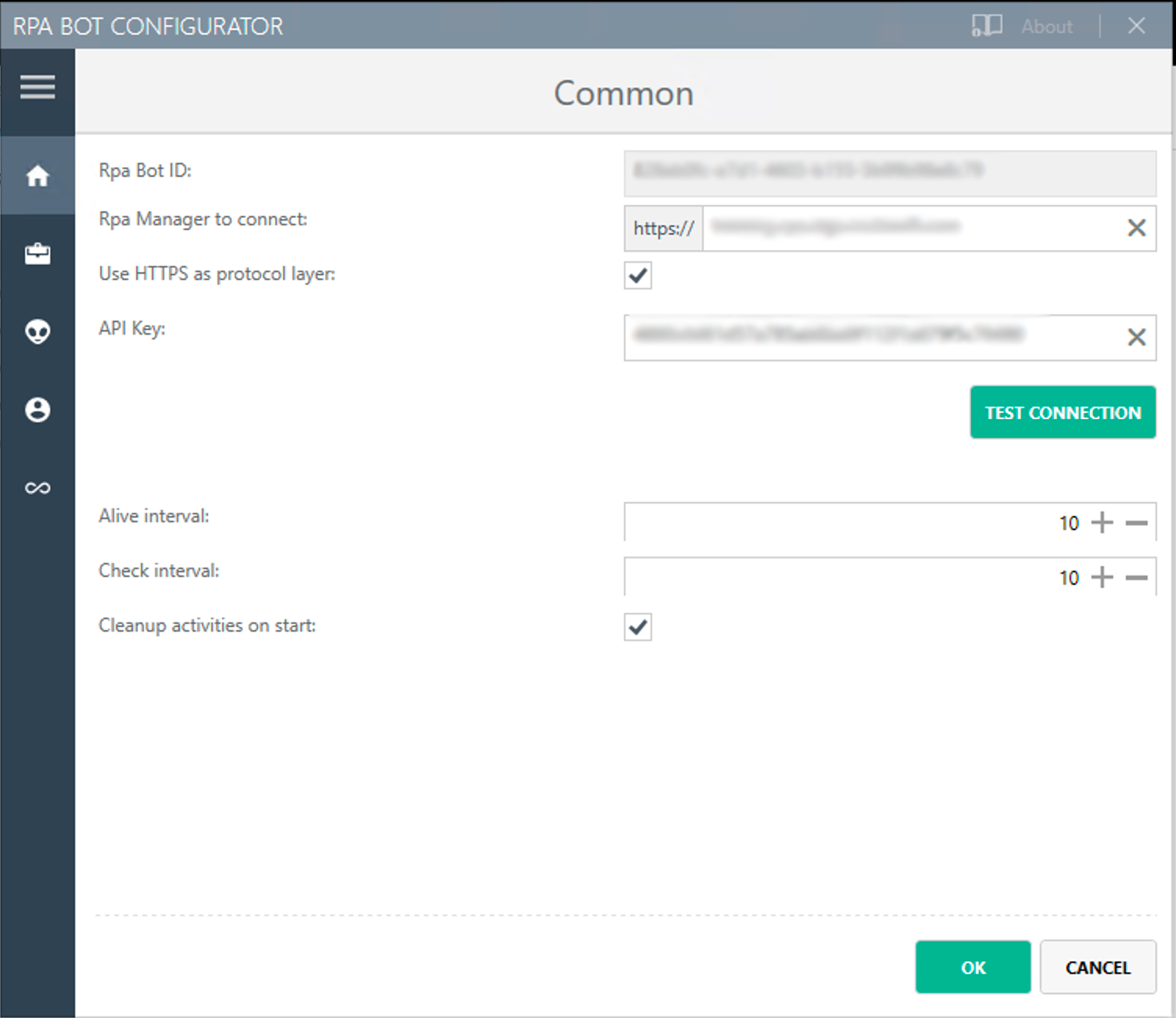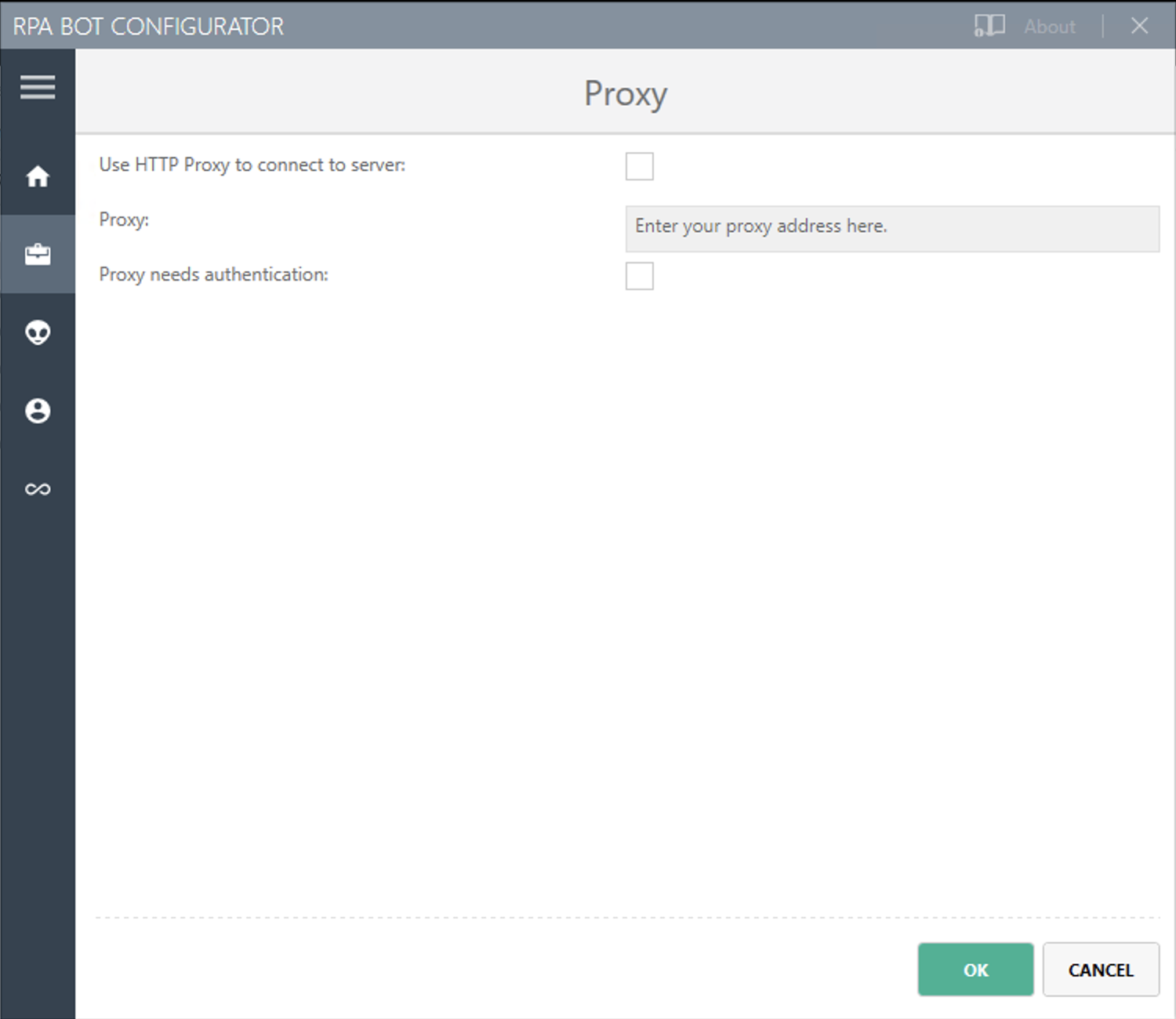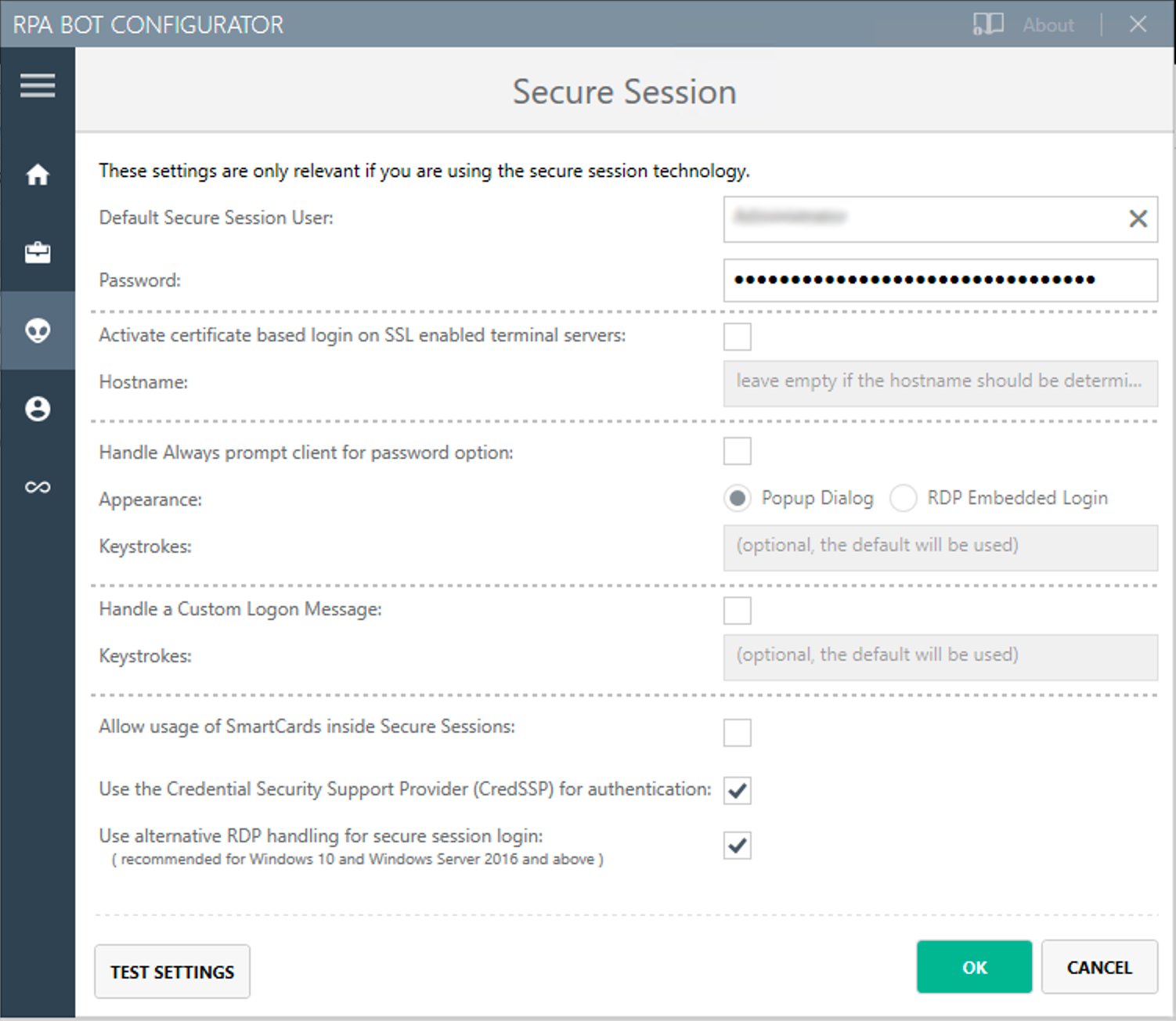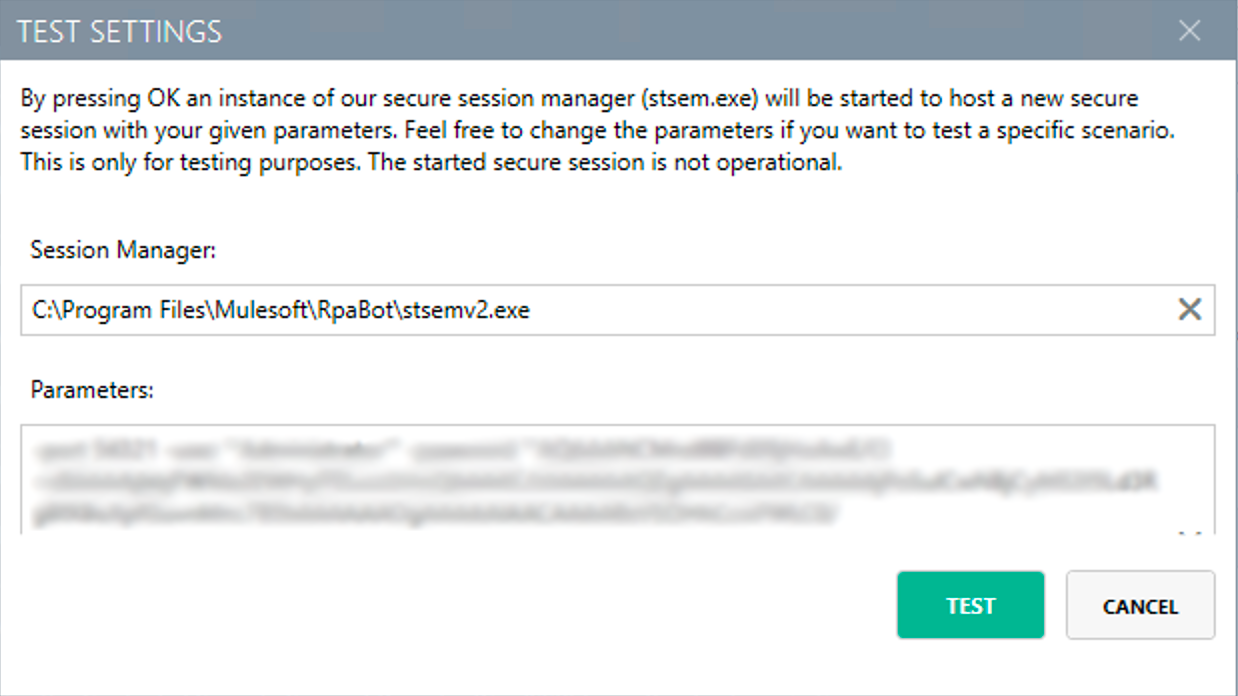Configuring RPA Bot
Use the RPA Bot Configurator application to change the default settings of a bot. You can find the application in the start menu under MuleSoft > RPA Bot Configurator.
The RPA Bot Configuration tool has five different configuration panels:
| After saving your changes, restart the RPA Bot Service for the changes to take effect. |
Common Settings

-
RPA Bot ID
ID generated during the installation process of RPA Bot, which identifies the bot in RPA Manager (even if the IP or MAC-Address changes). If you need a new ID, uninstall and then reinstall RPA Bot.
-
RPA Manager to connect
The URL address of the RPA Manager instance the bot connects to. There is no default setting.
-
Use HTTPS as protocol layer
Specifies whether the bot connects with RPA Manager via HTTP or HTTPS.
-
API Key
The API Key entered during the installation of the robot. You can change this setting.
-
Alive interval
Time interval in milliseconds after which the bot connects to the RPA Manager to show that it is still alive.
-
Check interval
Time interval in milliseconds after which the bot connects to RPA Manager and checks for provided packages to collect (such as Scheduling Tasks or Activities).
-
Cleanup workflows on start
Select this option to delete the workflows that are no longer assigned to a configuration but are still stored locally in the bot.
Proxy Settings

-
Proxy
The bot and RPA Manager communicate through the HTTP protocol at Port 80. If you connect to the internet through a proxy server, enter the proxy address in this field
Format:
http://<Serveraddress>:<Port>, for example:http://myproxy.de:881.
Secure Session
Enable the bot to use Secure Sessions by entering credentials the bot uses to login to the computer and to open a hidden session. If you don’t add credentials here, the bot can only use a running desktop session.

-
Default Secure Session User
If you want the bot to use Secure Sessions, enter the name of the user the bot uses to login to the computer and to run a hidden session. If the environment of the computer the bot is installed on is embedded in a domain and you want to use a local user, write the user name as follows:
.\username. -
Activate certificate based login on SSL enabled terminal servers
Enable this option if you are installing the bot on a terminal server that only allows SSL protected RDP connections.
-
Handle “Always prompt client for password” option
There is a Group Policy called
fPromptForPassword. If this policy is enabled, the password has to be entered a second time, when the RDP session is established. If this is the case, enable this option. Also choose the correct form of dialog. On some machines the second password entry is requested by a separate window in form of a popup dialog. And on other machines it is an embedded screen like the normal windows login. -
Handle a “Custom LogonMessage”
It is possible to configure an additional screen which is displayed after the login into an RDP session. It is called Custom Logon Message and normally needs to be acknowledged by pressing a button. If such a message appears when you connect to your system via RDP, enable this option.
-
Allow usage of SmartCards inside Secure Sessions
Enables authentication via SmartCard within the Secure Session.
-
Use the Credential Security Support Provider (CredSSP) for authentication
Select this option to use the CredSSP for authentication.
-
Use alternative RDP handling for Secure Session login (recommended for Windows 10 and Windows Server 2016)
If the Group Policy Always prompt for password upon connection is enabled, the password must be entered twice when logging into the RDP session. This might prevent the Secure Session from running smoothly, especially under Windows 2010 and Windows Server 2016. If this is the case, activate this option so that the credentials can be entered correctly in the second query.
In this context, ensure that you have selected the option Allow connections only from computers running Remote Desktop with Network Level Authentication (recommended) in the Windows System Properties.
Test Settings
You have the possibility to test your connection settings for the Secure Session with the TEST SETTINGS button. Clicking this button opens the pop-up window Test Settings, in which you can enter test parameters for the Secure Session.

If you click on TEST, the application starts a non-operational Secure Session in which you can see your parameters for the Secure Session listed. Click the Logout button to end this non-operational Secure Session.
Connection Settings

-
Connection settings
Here you can define the method how RPA Bot components (Robot, StSec and StSem) communicate among themselves. These settings are only relevant for Secure Sessions. Therefore, you can choose between the Named Pipes protocol or TCP. Named Pipes is selected by default, as an uncomplicated method. In some cases, when using TCP, the firewall can block the connection even though it is an exclusive internal computer process.
-
Session connection timeout
With an established connection, the session connection timeout defines the time that a call can remain unanswered before the bot cancels this call.
-
Retries in timeout
Defines how often the bot tries to reach a started StSec via session connection.
-
Seconds to wait between each try
The wait time specifies how long the bot waits between every individual attempt.
Session Monitoring

-
Take Analysis Pictures
Specify whether the bot takes screenshots while executing a process.
-
Analyze Pictures Count
Specify the number of screenshots to take.
-
Analyze Picture Seconds
Defines the interval at which the bot takes screenshots.
-
Analysis package on OK
If you check this box, analysis packages are sent if the Activity Workflow is terminated with OK.



